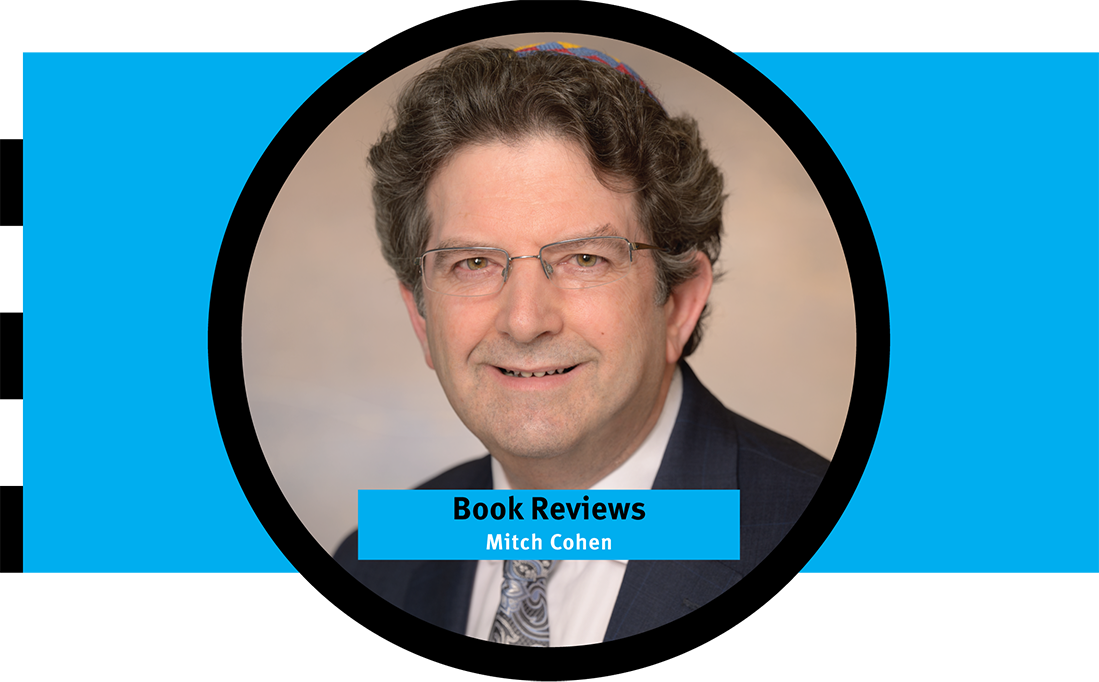“Wisdom From the House of Healing – Transformative Encounters of a Hospital Chaplain” by Hanan Balk
Walking into a hospital room can feel scary. What will you see when you turn to look at the person lying in the hospital bed? I’m not a rabbi, but I have visited a few congregants in the hospital. Once, I remember thinking, ‘I don’t really know him very well, what will I say?’ I found out quickly that I didn’t have to worry about talking. He started telling me all about his latest tests and what had been happening to him. He was just happy to have someone sit with him and listen. Rabbi Hanan Balk visited many patients in his new role as chaplain at The Christ Hospital in Cincinnati. He wrote about his experiences in his book, Wisdom “From the House of Healing – Transformative Encounters of a Hospital Chaplain.” Rabbi Balk explained that being a chaplain is very different than visiting the sick as a congregational rabbi. As a chaplain, he might only see the person once, unlike a congregational rabbi who has an ongoing relationship. The biggest difference is the purpose of the visit. Rabbi Balk wrote, “[as a congregational rabbi] it may be deemed successful if the patient and family are happy he came to support them.” But as a chaplain, the goal is to help the patient “release a heavy burden he may have not as yet shared with even those whom he is closest.”
Most of Rabbi Balk’s patients at The Christ Hospital were not Jewish, which made for entertaining reading when they saw a rabbi enter their room. One patient said, “You mean to tell me they have a rabbi who prays for you at The Christ Hospital? Can you imagine that?” Rabbi Balk filled his book with brief anecdotes from his encounters with his many patients. Rabbi Balk was encouraged by how he was welcomed by the majority of his non-Jewish patients. He was also welcomed by the non-Jewish staff. The staff would meet daily in something he called “The Huddle,” where they exchanged stories and learned from each other.
Rabbi Hanan Balk was known at the hospital as Chaplain Andrew. He thought that with so many non-Jewish patients, they might have a hard time calling him by his Hebrew name, Hanan. Chaplains often use their first names for a more personal touch. His high school nickname Bagel Balk wasn’t a great choice for a chaplain. He suggested using his English name Andy, but his supervisor thought that Andrew sounded more dignified. Later, he discovered that Andrew was the name of one of the apostles, so it felt like a good fit for The Christ Hospital. He was the only rabbi on staff and sometimes the only chaplain on call.
I was impressed with how Rabbi Balk kept true to himself while respecting his patients’ religious beliefs. One woman said, “Put your hands on my knees and pull out the arthritis.” Rabbi Balk explained that he couldn’t do that for her. After some internal debate about whether he should have tried, he concluded, “I had to be completely authentic in my presence at the bed of the sick.” He was uplifted by the fact that the Christian woman who truly believed in faith healing was able to trust a rabbi to perform such a miracle. I was also impressed that he was able to convince the hospital administration that their newly renovated chapel shouldn’t have a permanent cross displayed. They agreed that The Christ Hospital was non-denominational and that clergy would bring their appropriate ritual items with them. He wrote that he was only able to accomplish this after many months of building relationships with his new hospital community.
His knowledge of rabbinic wisdom was the GPS that helped him organize his book and navigate the new direction of his life. If you enjoy reading rabbinic wisdom and teachings, you will enjoy this book. Every chapter includes rabbinic references. Becoming a chaplain transformed him as he found a new purpose helping his patients at The Christ Hospital after serving as a congregational rabbi for over a quarter of a century. Through a rabbinic lens, he dedicated chapters to the holiness he observed at the hospital, including the nurses whom he compared with angels. He wrote that angels in the Jewish tradition only focus on one mission at a time. So he argued that since nurses “can multi-task, it gives them an edge on the angels.”
He cherished his daily Huddle sessions with his new community of chaplains and hospital staff. Much of the material in the book came from Rabbi Balk’s notes of the conversations he had with patients that he shared during the daily Huddle. He wrote that he almost named the book, The Huddle. Each patient was given a short chapter, and Rabbi Balk organized several of his patients under larger themes, which helped tie everything together.
Rabbi Balk’s book was much like a good Dim Sum meal. If you have ever eaten at a Dim Sum restaurant, they bring out a variety of small plates throughout the evening. The many chapters of his patient visits and rabbinic knowledge became a full meal of 320 pages that were filled with heart, humor, tears, humility, gratitude and wisdom. I think my experience as a reader is similar to what it must be like to be a chaplain. During your shift, you have a series of short encounters. After you offer your help, you have to go on to the next room and see the next patient. I’m sure as a rabbi, he would have liked to dig deeper into his patients’ stories and their lives, but it just wasn’t possible when there was another patient who needed him.
I enjoyed learning about the role of a chaplain. It’s very different than what comes to mind when I think of comforting the sick. One of his supervisors said a chaplain can offer a tissue, but not a hug. He said, “We want her to be able to cry so she will fully express her emotions. If you hug her, it may lead her to close up! Just let her cry.”
I recommend this book to a broad audience. Rabbi Balk said that he hoped his book may attract others to the profession of becoming a chaplain. I think people will be inspired by Rabbi Balk’s faith and his journey. Many in Cincinnati may know Rabbi Balk and will be interested in reading his story. Others will feel uplifted by how people of different faiths can come together and recognize that they really aren’t that different. In the end, everyone has to deal with the same human challenges of health, love, family, relationships, loss and forgiveness.




